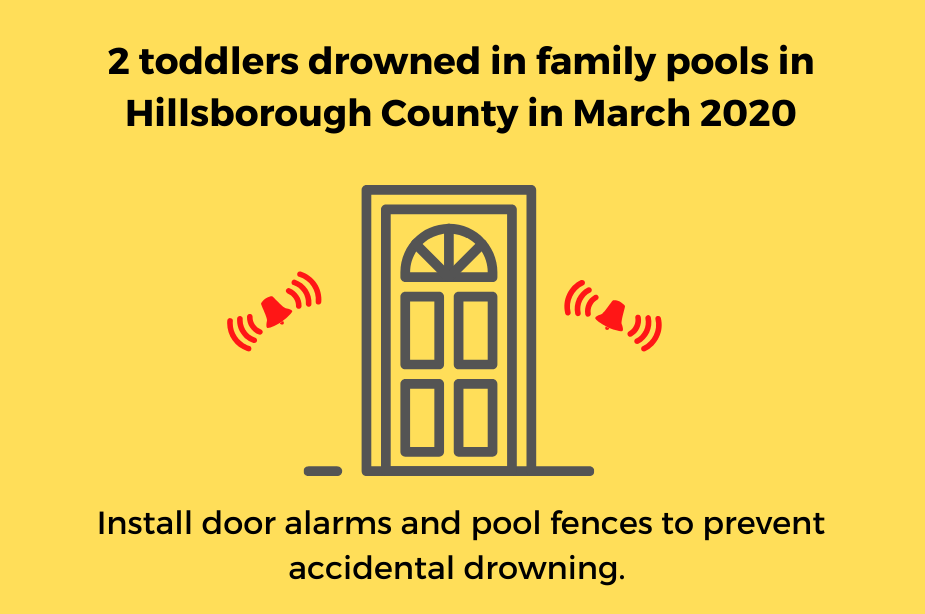
Tips to prevent accidental drownings
Hillsborough County had an increase in accidental drownings in young kids last year. In 2019, 14 local children under the age of 5 accidentally downed.
It’s common for parents and caregivers to think that children are safe from harm when they’re in their home. But most preventable deaths happen in or near the home. Many times, the parent or caregiver thought the child was playing or napping, and didn’t realize that the child had gained access to a body of water. It’s when accidental drownings occur.
Young children can drown in as little as 20 seconds. Becoming distracted or losing track of a young child for even a few seconds can be fatal.
During Water Safety Month, Prevent Needless Deaths urges parents and caregivers to take these steps to prevent accidental drownings.
Follow these tips to prevent accidental drownings:
- Realize the risks are year-round. Many parents and caregivers may think that drowning only happens in the summer or near the beach or pool, but in Tampa Bay the threat of water is everywhere all year long. Lakes, retention ponds and canals are just as dangerous as a pool.
- Stay alert. Drowning often happens silently, without the child splashing or calling out for help. This makes it even easier for a drowning child to go unnoticed, so stay alert to prevent accidental drownings.
- Designate a “water watcher.” Lack of adult supervision in and around the water is the main reason children die from drowning. An adult should be assigned to keep their eyes on the child at all times when they are in or near water, and must avoid distractions such as texting. Infants and toddlers should always be accompanied by an adult in the water, and be within arm’s reach.
- Never rely on floatation devices. Flotation devices, such as water wings, inner tubes or even life vests should be used only in conjunction with close adult supervision.
- Be aware of hidden hazards. A young child can drown in as little as 1 inch of water, everything from a bucket to a puddle to a pet’s water bowl can pose a drowning risk.

